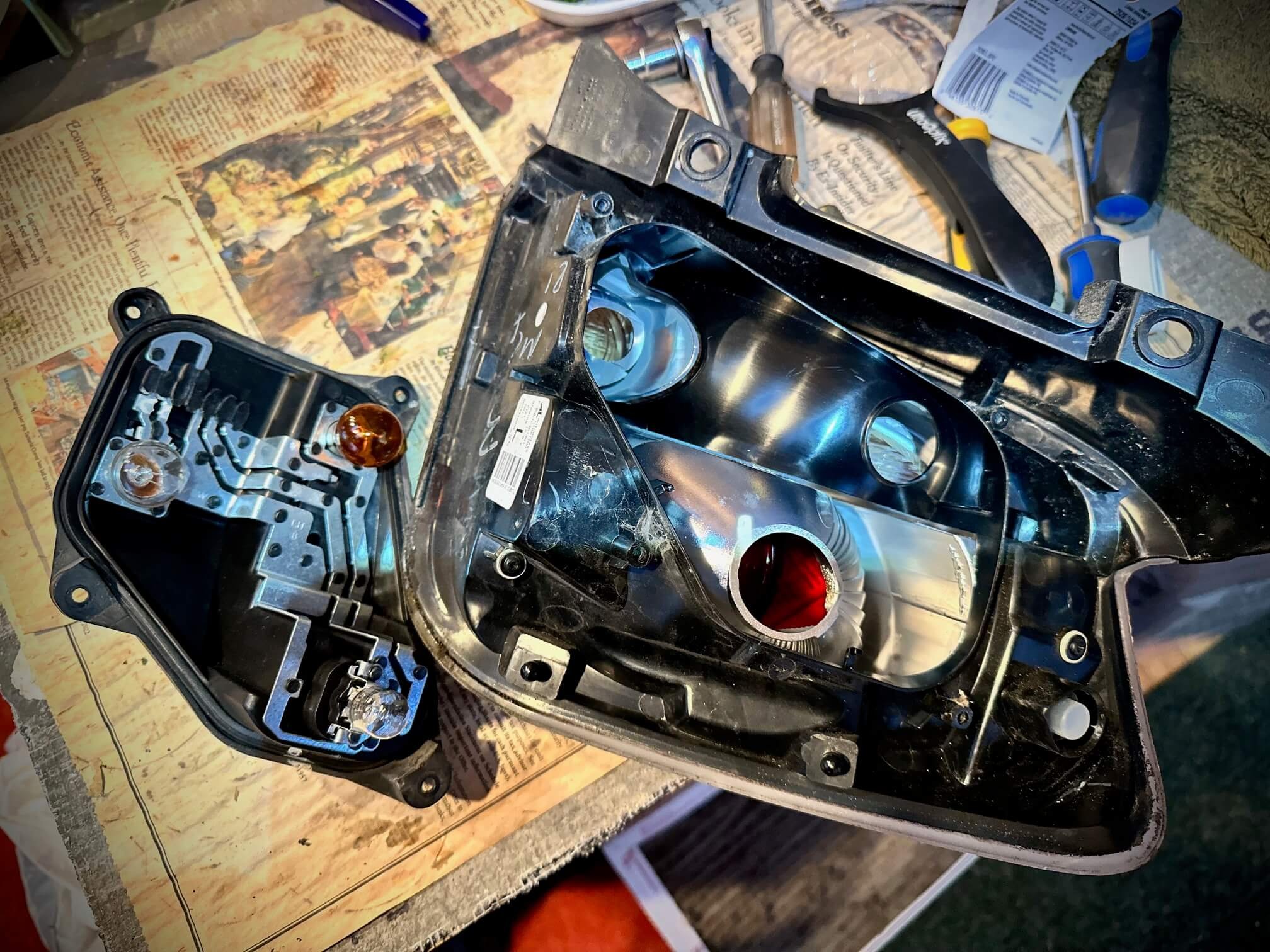Problems Aren’t A Problem
Recently, I changed a burn-out brake light on my car.
I’ve never done it but I had the new bulbs and I’ve changed headlamp bulbs several times with no problem.
it was 26F outside with six inches of icy snow on ground and car and I’d procrastinated so I had 45 minutes before sunset and the temperature began it’s plummet to 14F. this race had a tight cutoff.
I discovered I had to unscrew the whole light fixture holding brake and backup lights off the car but the screws wouldn’t budge. I rummaged in the shop and found the right size socket to ratchet the two screws out.
“Ok, hard part done,” I thought.
But then I had to unplug the light fixture from the car…without breaking a tiny plastic clip that connected the car’s wiring to the light because breaking the clip would cost me an entire light fixture.
“Ok, now the hard parts are done,” I thought.
but then I had to get the cover off the light fixture to reach the bulb inside and it was held together by odd screws that needed a tool I didn’t have - a tort wrench.
Discouraged, I thought through my options - drive in the ice to the nearest car parts store? Too iffy. Ask my neighbor if he had one? Out of town.
I didn’t have tie so before I complicated things, I decided to actually look in the shop instead of assume.
Lo and behold, I’d somehow accumulated several, including the right size.
“Ok, surely that’s all the hard parts done,” I thought.
But then I had to get the thumb-sized build out without breaking the bulb’s metal cap off in the socket, and the bulb wouldn’t screw out.
I broadened my thinking. How else could it possibly be in there? How else do things like this unscrew? I finally thought of pill bottle lids you have to push down and turn - bingo, it came out!
“Ok, NOW all the hard parts are done,” I thought. “All I have to do is reverse everything.”
Except I couldn’t get the new bulb in, the simplest part. Reversing the process didn’t work. What now??
I looked at the socket. It had two slots for two prongs and the bulb cap had two prongs. Not rocket science. What was I missing?
I looked at the bulb - sure enough, two prongs - but I happened to tilt it on it’s side and noticed the prongs were staggered. The bulb only fit one, specific way - I’d lined the wrong prongs up with the wrong slots.
From here, reversing steps was simple. It felt like mile 80 of a 100-mile race. I has on the home stretch.
“Done!” I thought.
Except…I couldn’t tell if the new bulb worked. I couldn’t press the brake and be behind the care to see the brake lights at the same time.
Thankfully, a neighbor walked over to verify, and the light worked! I cross the project finish line minutes before sunset.
Ultramarathons aren’t simple about your body’s ability to cover a ton of miles.
They’re also about your ability to solve problems along the way. Twisted ankle, blisters, dehydration, nausea, a wrong turn…
When problems keep appearing like they did in my brake light adventure, it’s easy to conclude you aren’t meant to finish the race. There’s too much working against you and you might as well give up the fight.
But after you drop, you wish you hadn’t used the number of problems against yourself, had kept on, and finished.
Problems aren’t a problem.
Problems are a part of the race.
Problems and how you deal with them ‘make you’ as an ultra runner - as much as the miles do.
The number of problems only means you have more or less of them to solve in this race than you expected. It doesn’t mean anything about your worth or capability as an ultrarunner.
And a fun way to actually get excited about them?
The more problems you solve, the closer you get to the finish line.

